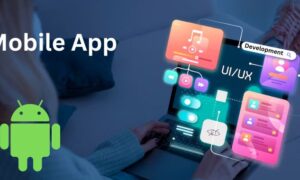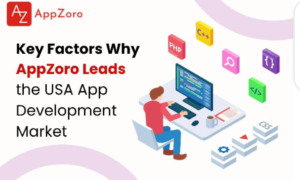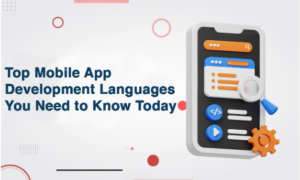End-to-end monitoring analyses data across your infrastructure, devices, applications, and services to get a complete picture of your digital environment and how people interact. It is the process of determining the quality of the digital environment.
What is cloud monitoring?
Ensuring that cloud services are functioning properly is the process of assessing, monitoring, and managing cloud-based services, applications, and infrastructure. Enterprises use various application monitoring tools to monitor their cloud-based applications. Here are how it works and the best practices for success.
What is cloud app development?
Cloud app development is the creation of software solutions that distribute processing logic and data storage in gadgets between client-side (visible to users and accessible for interaction) and server-side (responsible for data processing) gadgets.
How to process End to end cloud monitoring app development for the cloud?
Follow these steps for effective End to end Cloud monitoring.
- System health monitoring
Monitoring is usually not the first problem developers, and administrators face when developing an application. When college deadlines were set for publishing the results of group projects, my colleagues and I typically shifted our focus to feature development rather than testing and monitoring. However, once the software system is required to run, the need for monitoring becomes very important.
The need for advanced monitoring is growing, especially when managing distributed systems that cannot be debugged into traditional monolithic programs. The main difficulty with monitoring is that it must be developed specifically for the monitoring application. There is no one-size-fits-all approach to monitoring.
Regarding monitoring, there are some use cases worth mentioning. When operating a software platform, the emphasis is on monitoring system health. Monitoring has different meanings depending on the domain in which it is used.
Efforts to monitor software systems are of particular interest to security, application performance, compliance, and feature usage issues.
- Monitoring Tools
Common monitoring tools have been created and customized for the domain of systems to be monitored. Whether you monitor clusters of homogeneous hardware with the same operating system or manage the IT infrastructure of medium to large enterprises with heterogeneous hardware (databases, routers, application servers, etc.) Monitoring requirements vary widely. If you are writing a new software application, or are tasked with maintaining a software application, try out some sample tools that focus on different monitoring aspects.
If your project is focused on infrastructure components, the collection might also be interesting to look at. For small web applications, we recommend building with StatsD and focusing on tracking relevant business KPIs within relevant functions in your code. As with any software, projects use log management systems or alternatives such as the Elastic stack.
- End-to-end cloud monitoring strategy
When defining a platform monitoring strategy from a technology perspective, the first decision should be to take full advantage of the SaaS monitoring solutions Microsoft already offers to monitor applications and infrastructure hosted in Azure. , adopting external proprietary solutions or deploying them openly. A source monitoring tool for monitoring your platform.
The tools used were Azure Monitor, Azure Log Analytics, and Azure Application Insights. Microsoft’s application monitoring tools are seamlessly integrated into Azure, making it easier to implement white-box monitoring. Implementing black box monitoring to determine the availability of the most important features of the platform has been very difficult.
If your job is to monitor software systems, defining a monitoring strategy is the best place to start. In doing so, the following concepts should be taken into account:
- End-to-end identification of symptoms and causes
- End-to-end black box and white box monitoring
- End-to-end proactive and reactive monitoring
- End-to-end warning
End-to-end Symptoms and causes distinction
Distinguishing between symptoms and causes is especially important when generating problem notifications and defining alert thresholds. In the context of monitoring, symptoms are cheating from the user’s perspective. Symptoms include slow web page rendering or corrupted user data. On the other hand, the cause is the root of the symptoms. Slow web page rendering can be caused by faulty network devices or high CPU load on the application server.
End-to-end Black-box and white-box monitoring
Black box monitoring tests the system’s functionality and ensures that the results are valid. A warning is issued if the results are not as expected. White-box monitoring collects information that warns of component states and abnormal levels. White box monitoring helps operations personnel identify root causes, and black box monitoring is used to identify symptoms.
End-to-end Proactive and reactive monitoring
Black-box and white-box monitoring are concepts of proactive and reactive monitoring. Reactive monitoring deals with collecting, analyzing, and alerting data that can reflect errors in your system. Reactive monitoring, on the other hand, handles changes in monitored objects that lead to poor service performance or complete unavailability.
Focuses on recognizing critical situations. Black-box monitoring results help identify issues affecting users, while white-box monitoring techniques provide better insight into the internal health of the system. Careful analysis of trends in internal metrics can predict impending failures and trigger system recovery mechanisms, automatically scale system resources, and alert system operators.
End-to-end Alerting
Alerts are an important part of monitoring. However, warnings do not necessarily include paging. The latter should generally be left as an exception and only used when the service is already unavailable without human intervention or failure is imminent.
Conclusion
Combining the implementation of modern software architecture patterns such as microservices with the use of cloud services beyond IaaS enables rapid development of software services. Deploying applications in the cloud reduces the overhead of managing infrastructure, but as a result, monitoring highly distributed systems is becoming increasingly complex. Additionally, customers expect fast response times and high availability from modern online applications, increasing the need for accurate monitoring systems.



































